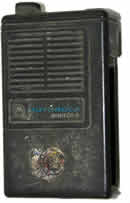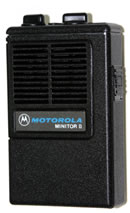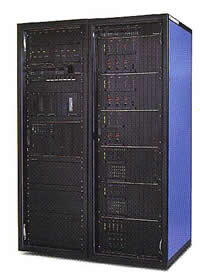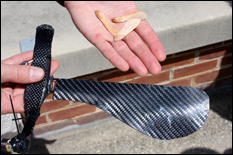BloostonLaw Telecom Update Published by the Law Offices of Blooston, Mordkofsky, Dickens, Duffy & Prendergast, LLP [Portions reproduced here with the firm's permission.] www.bloostonlaw.com |
| Vol. 12, No. 37 | x October 21, 2009 |
 Comments on Stimulus Applications Due Oct. 28 On Monday, September 28, the filing window for incumbent carrier responses to broadband stimulus funding applications opened. During the 30-day comment period, affected incumbent carriers have the opportunity to supply the National Telecommunications and Information Administration (NTIA) and the Rural Utilities Service (RUS) with information about the broadband services they are currently providing in areas which may overlap the funding areas proposed by stimulus applicants. The agencies are relying on this process to weed out applications that propose service areas which already enjoy the minimum definitional requirements for broadband access as set forth in the Notice of Funds Availability (NOFA) of July 9, 2009. The filing window will remain open until October 28, 2009. Until that date, the public is able to access the agencies’ application map database to view the areas applicants are proposing to serve if they are granted stimulus funds. It is not necessary to have applied for stimulus funding in order to file comments, nor is there any indication that applicants are restricted from responding. However, only incumbent carriers are invited to comment on the applications. There are several criteria under which applicants can meet the minimum statutory requirements to receive funding, and there are many factors carriers should consider before filing a response. To this end, BloostonLaw has prepared a questionnaire to help clients develop the kind of information which should be prepared in order to make the response filing. Carriers who believe stimulus applicants may have applied for funding in their service areas should waste no time in beginning the response process. Identifying applications to respond to is a deceptively arduous task, and each application must be responded to individually. BloostonLaw contacts: Mary Sisak, 202-828-5554; John Prendergast, 202-828-5540; and Gerry Duffy, 202-828-5528. |
INSIDE THIS ISSUE - USF faces new threats under new administration?
- FCC “googles” Google about voice calling restrictions.
- Controversial net neutrality NPRM is lone item on FCC’s Oct. open meeting agenda.
- FCC seeks comment on Berkman Center broadband study.
- ALJ recommends FCC deny WealthTV’s carriage complaint against four MVPDs.
|
USF Faces New Threats Under New Administration? Recent meetings at the FCC with representatives from the offices of at least one Commissioner, the Wireline Competition Bureau, and the Office of Strategic Planning have included exchanges that raise serious questions regarding the continued availability of existing levels of Universal Service Fund (USF) support for rural carriers. A common outlook at the FCC is that the traditional circuit-switched voice network is rapidly evolving into a national packet-switched broadband network, and that the current USF will need to morph likewise into a broadband program. Whereas the presentations at the FCC’s September 29, 2009, broadband meeting recognized that broadband deployment and operating costs will be high in rural areas, this does not necessarily translate into a revised broadband high-cost program that will provide rural carriers with USF support in comparable or greater amounts than they are receiving today. Rather, various FCC personnel have indicated in recent meetings that that the “best approach” might be to terminate or “blow up” the existing USF program rather than tweaking it, and to start over with a new broadband high cost program that may or may not encompass substantial numbers of current USF recipients. To be very specific, there have been several very clear warnings that there is no guarantee that rural carriers will continue to receive their existing levels of support from a modified or replacement USF. Some FCC staffers appear to believe that rural telephone companies, in particular, have done a good job in deploying broadband to substantial percentages of their customers, and that most or all future broadband high-cost support should be directed to geographic areas and low-income groups that do not presently have significant broadband access or take rates. Since the USF program was implemented in the mid-1980s, some of FCC staffers have been hostile to it. But just because certain FCC staffers may not like certain USF programs has not previously meant that the FCC would significantly curtail or eliminate them. However, given the major focus of the current FCC upon the National Broadband Plan that it will present to Congress by February 17, 2010, statements by staffers associated with the development of that Plan regarding potential changes in the distribution of future USF support should be taken seriously. At a very minimum, rural carriers should be prepared to demonstrate to the FCC and Congress that they still need to make substantial investments to continue providing their customers with broadband facilities and services “reasonably comparable” in quality and price to those available in urban areas, and that they will need substantial continuing USF support to furnish such facilities and services at affordable rates. It appears from the tenor of FCC meetings and FCC reports on the progress of its Broadband Plan that these demonstrations will need to be much more detailed and more thoroughly substantiated by data than in the past. For instance, the FCC appears to be much more focused upon the nature and amount of the costs necessary to deploy and operate broadband facilities and services in various types of geographic areas, the extent to which certain costs can be reduced or eliminated, and the possibility that increased customer revenues for broadband services can replace or reduce USF revenue streams. We note also that Congressmen Rick Boucher (D-Va.) and Lee Terry (R-Neb.) are preparing another version of the Terry-Boucher and Boucher-Terry bills that have been offered but not enacted during the last two Congresses. The current version of the bill has not yet been completed and proffered. However, early discussions indicate that it is likely to contemplate the provision of approximately the current level of capped USF support to rural telephone companies. It is unclear at this time whether a new Boucher-Terry bill will make it by Chairman Henry Waxman (D-Calif.) and Ranking Member Joe Barton (R-Texas) of the House Commerce Committee and be passed by the House, whether there will be an appropriate companion bill offered and enacted in the Senate, and whether an ultimate Senate-House USF reform or telecommunications bill will be signed into law by President Obama. The rural telecom industry must determine whether (1) a USF capped at current support levels, while not an ideal solution, is preferable to a possible significant curtailment or elimination of USF support to rural carriers under some potential versions of the National Broadband Plan; and (2) what can be done to best protect the industry’s ability to provide needed rural services. Whereas USF and access revenue streams have been under attack since 1995, the remainder of 2009 and 2010 are likely to be a critical and trying period for the rural telephone industry. We are monitoring FCC and Congressional developments and working to develop options and solutions. We welcome your comments. BloostonLaw contacts: Ben Dickens, Gerry Duffy, and Mary Sisak FCC “googles” Google About Voice Calling Restrictions The FCC last week sent a letter to Google noting that recent reports indicate that the Company’s “Google Voice” service restricts calling from consumers to certain rural communities. In light of pending Commission proceedings regarding concerns about so called “access stimulation,” the letter stated, the Commission’s prohibition on call blocking by carriers, as well as the Commission’s interest in ensuring that “broadband networks are widely deployed, open, affordable, and accessible to all consumers,” the FCC said it is interested in gathering facts that can provide a more complete understanding of this situation. To that end, the FCC asked Google to provide answers to the following questions by close of business on Wednesday, October 28, 2009: “1. We understand that Google Voice offers a number of different functionalities, including: - (a) the ability to have calls to a Google Voice telephone number forwarded to designated telephone numbers;
- (b) the ability to place outgoing calls from the Google Voice website;
- (c) the ability to place outgoing calls from the Google Voice mobile site; and
- (d) the ability to place outgoing calls by calling your own Google number and signing into the Google voicemail system.
- (i) For each of these functionalities, and any other functionalities that allow Google Voice users to place calls, please describe how the Google Voice call is routed and whether calls to particular telephone numbers are restricted. For each functionality for which calls to particular telephone numbers are restricted, please describe the technological means by which those restrictions are implemented.
- (ii) How does Google inform Google Voice users about any restrictions in the numbers to which calls can be placed using Google Voice?
- (iii) To what extent are each of these Google Voice functionalities offered for free? To what extent, if any, does Google charge for any of these services? Does Google intend to charge at some point for the service? How does Google currently pay for the service?
“2. Please explain specifically what is meant by “invitation-only.” How many users of Google Voice are there at this time? Are there any plans to offer Google Voice on other than an invitation-only basis? “3. How does Google believe its various Google Voice services fit within the statutory classifications in the Communications Act of 1934, as amended (the Act) and the Commission’s regulatory classifications (e.g., interconnected VoIP)? Do you believe its “invitation-only” subscribership affects the classification of Google Voice in any way? If so, please explain. Does the Google Voice service compete with any services classified as “telecommunications services” under the Act? Is Google Voice a reseller of “telecommunications services?” Please explain your answers. “4. How does Google identify the telephone numbers to which it restricts calls? Does it restrict calls to individual telephone numbers, or to particular exchanges or NPA-NXXs? Why does Google Voice restrict calls to these numbers? “5 Does Google contract with third parties to obtain inputs for its Google Voice service, such as access to telephone numbers, transmission of telephone calls, and interconnection with local telephone networks? Please provide the names of such third parties.” Google’s restriction of access to rural communities, apparently based on cost considerations, may be a preview of what may happen if USF and other traditional rural development programs are compromised. BloostonLaw contacts: Ben Dickens, Gerry Duffy, and Mary Sisak. Controversial Net Neutrality NPRM Is Lone Item On FCC’s Oct. Open Meeting Agenda At tomorrow’s open meeting, the FCC will consider a Notice of Proposed Rulemaking (NPRM) on policies to preserve the open Internet in WC Docket No. 07-52. This is the only item on the Commission’s October 22 meeting agenda, and it appears to be the first step toward codifying “net neutrality”—the requirement that high-speed Internet providers give equal treatment to all data flowing over their networks—into the rules some time next year. As reported by The AP and other media, FCC Chairman Julius Genachowski has the support of the other two Democratic Commissioners, which is enough to adopt the item. But the proposal has run into strong opposition from the large phone, cable, and wireless companies that provide the bulk of U.S. high-speed Internet connections. As AP has noted, broadband providers such as AT&T, Verizon, and Comcast argue that after pouring billions of dollars into their networks, they should be able to operate those networks as they see fit. That includes offering premium services over their lines to differentiate themselves from competitors and earn a healthy return on their investments. AP also notes that Genachowski's proposal has also encountered concerns among the Republican Commissioners and GOP Members of Congress, who fear network neutrality rules could discourage broadband providers from continuing to expand and upgrade their systems. "The risk of regulation really inhibits investment," said Republican Commissioner Robert McDowell. Noting the agency's estimated price tag of up to $350 billion to bring broadband connections to all Americans, he added: "How do we pay for all that?" Essentially, Genachowski would add a “non-discrimination” principle and a “transparency” principle to the four existing principles in the Commission’s 2005 broadband Internet Policy Statement (BloostonLaw Telecom Update, September 23). Under the principle of non-discrimination, broadband providers cannot discriminate against particular Internet content or applications. This means they cannot block or degrade lawful traffic over their networks, or pick winners by favoring some content or applications over others in the connection to subscribers’ homes. Nor can they disfavor an Internet service just because it competes with a similar service offered by that broadband provider. The Internet must continue to allow users to decide what content and applications succeed. The transparency principle states that providers of broadband Internet access must be transparent about their network management practices. The Internet evolved through open standards, the Chairman said. It was conceived as a tool whose user manual would be free and available to all. But new network management practices and technologies challenge this original understanding. Today, broadband providers have the technical ability to change how the Internet works for millions of users — with profound consequences for those users and content, application, and service providers around the world. In recent weeks, a bipartisan group of lawmakers on Capitol Hill has denounced Genachowski’s net neutrality plan, saying it threatens to scare off investment in telecommunications networks. But the Washington Post this week reported that Aneesh Chopra, President Obama's chief technology officer, said the concerns are premature because no rules have been drafted. He said the FCC Chairman has merely proposed starting the rulemaking process. "There aren't even any rules out yet for anyone to criticize. This is a process and [the FCC] is just at the beginning of that process," Chopra said in an interview, according to the Post.
Nevertheless, it is clear that the White House supports net neutrality. Obama has made open Internet policies a pillar of his technology agenda and immediately endorsed Genachowski's announcement last month for new rules, the Post reported. Genachowski has said new regulations would ensure that consumers get access to any legal content on the Web, regardless of whether it originates with network owners or a third-party entrepreneur. On Friday, the Post continued, 72 Democratic members of Congress outlined additional concerns. They sent a letter to Genachowski urging him to proceed cautiously, arguing that broadband networks have expanded through competition and private investment. New rules shouldn't come from early conclusions based on "slogans rather than substance," they wrote. The letter includes the signatures of several members of the Congressional Black Caucus and 31 Blue Dog Democrats, a group of moderate-to-conservative Democratic lawmakers who have voted together on issues such as healthcare and financial reform. "In light of the growth and innovation in new applications that the current regime has enabled, as compared to the limited evidence demonstrating tangible harm, we would urge you to avoid tentative conclusions which favor government regulation," the lawmakers, including Reps. Gregory W. Meeks (D-N.Y.) and Joseph Crowley (D-N.Y.) wrote, according to the Post. BloostonLaw contacts: Ben Dickens, Gerry Duffy, and Mary Sisak. FCC SEEKS COMMENT ON BERKMAN CENTER BROADBAND STUDY: On July 14, the FCC announced that Harvard University’s Berkman Center for Internet and Society would conduct an expert review of existing literature and studies about broadband deployment and usage throughout the world to inform the Commission’s development of a National Broadband Plan. A draft of the study has now been completed. The Commission is seeking public comment on the study, and has posted the draft for public review at the following Internet address: http://www.fcc.gov/stage/pdf/Berkman_Center_Broadband_Study_13Oct09.pdf. Specifically, the Commission seeks comment on the following: - Does the study accomplish its intended purposes?
- Does the study provide a complete and objective survey of the subject matter?
- How accurately and comprehensively does the study summarize the broadband experiences of other countries?
- How much weight should the Commission give to this study as it develops a National Broadband Plan?
- Are additional studies needed along the lines of the Berkman study?
The FCC asks parties to provide any other comments on the Berkman study that they deem relevant. Comments in this GN Docket Nos. 09-47, 09-51, and 09-137 (NBP Public Notice #13) proceeding are due November 16. There is no reply date. BloostonLaw contacts: Ben Dickens, Gerry Duffy, and Mary Sisak. ALJ RECOMMENDS FCC DENY WealthTV’s CARRIAGE COMPLAINT AGAINST FOUR MVPDs: In 2007 and 2008, Herring Broadcasting, Inc. d/b/a WealthTV, a video programming vendor, filed separate carriage complaints against four multichannel video programming distributors (MVPDs) — Comcast Corporation, Time Warner Cable, Cox Communications, and Bright House Networks (BHN) — alleging that these MVPDs had violated section 616 of the Communications Act, and section 76.1301(c) of the Commission’s rules, by discriminating against WealthTV in video programming distribution. Specifically, WealthTV asserted that the defendants failed to negotiate in good faith and denied it carriage while providing preferential treatment to MOJO, a programming vendor affiliated with defendants. According to Wealth TV, MOJO’s programming was similar to WealthTV’s programming and MOJO targeted the same audience as WealthTV. WealthTV claimed that the defendants’ actions unreasonably restrain its ability to compete fairly in the marketplace and requested the Commission to order each defendant to carry WealthTV for a period of ten years under specified terms and conditions. On October 14, 2009, Chief Administrative Law Judge Richard L. Sippel issued a Recommended Decision, in which he proposed that the FCC deny WealthTV’s complaint because (1) it had not satisfied its burden of proving that any of the defendants engaged in discrimination in the selection, terms or conditions of carriage on the basis of WealthTV’s non-affiliation; and (2) it had not satisfied its burden of proving that any of the defendants unreasonably restrained WealthTV’s ability to compete fairly. BloostonLaw contact: Gerry Duffy. FCC PERMANENTLY REASSIGNS THREE TOLL-FREE SUICIDE PREVENTION HOTLINE NUMBERS: The FCC has granted the request of the Substance Abuse and Mental Health Services Administration (SAMHSA), a component of the United States Department of Health and Human Services (HHS), to reassign permanently three toll free numbers used as suicide prevention hotlines from the Kristin Brooks Hope Center (KBHC) to SAMHSA. In this highly unusual situation, the Commission must exercise its plenary numbering authority to deviate from its first-come, first-served rule with respect to the assignment of toll free numbers. Such deviation is necessary in this extraordinary circumstance to promote the public safety goal of suicide prevention. The Commission found that permanent reassignment of the three toll free numbers at issue to SAMHSA will ensure the long-term operation of the suicide prevention hotlines and will therefore best serve the public interest. Accordingly, the FCC granted the request of SAMHSA and permanently reassign 1-800-SUICIDE (1-800-784-2433), 1-888-SUICIDE (1-888-784-2433), and 1-877-SUICIDA (1-877-784-2432) to that organization. Also the Commission denied an application for review of the Bureau’s temporary reassignment to SAMHSA filed by KBHC. BloostonLaw contacts: Ben Dickens, Gerry Duffy, and Mary Sisak. SENATE EXTENDS PSIC GRANT PROGRAM: U.S. Senator John D. (Jay) Rockefeller IV (D-W.Va.), Chairman of the U.S. Senate Commerce, Science, and Transportation Committee, and Ranking Member, Senator Kay Bailey Hutchison (R-Texas), both lauded the Senate’s passage of S. 1694, a bill that extends the Public Safety Interoperable Communications (PSIC) grant program established under the Digital Television Transition and Public Safety Act of 2005 to remain available until expended through fiscal year 2012. The PSIC grant program provides funding for state projects that arm public safety personnel with interoperable communications equipment and the necessary training for system users. The bill has been referred to the House Energy and Commerce Committee. BloostonLaw contacts: Hal Mordkofsky, John Prendergast, and Richard Rubino. |











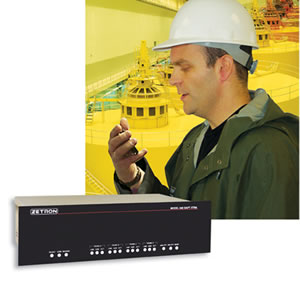 The Model 640 DAPT-XTRA Paging Terminal is a cost effective solution for small to medium-sized systems and private organizations offering a paging service based on bureau-type operator paging and/or direct telephone access. The 640 supports up to 1,500 users with up to 4 telephone lines. It also supports voice paging, voice prompts, talkback paging, and alphanumeric paging.
The Model 640 DAPT-XTRA Paging Terminal is a cost effective solution for small to medium-sized systems and private organizations offering a paging service based on bureau-type operator paging and/or direct telephone access. The 640 supports up to 1,500 users with up to 4 telephone lines. It also supports voice paging, voice prompts, talkback paging, and alphanumeric paging.  Zetron's Remote Monitoring equipment provides monitoring and notification of unusual conditions and status changes. Messages are automatically transmitted over a radio or a public address system. Notification can be sent via speaker or radio announcement, telephone, cellular phone, or paging.
Zetron's Remote Monitoring equipment provides monitoring and notification of unusual conditions and status changes. Messages are automatically transmitted over a radio or a public address system. Notification can be sent via speaker or radio announcement, telephone, cellular phone, or paging. 


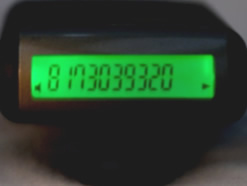












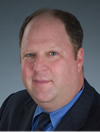







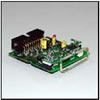
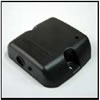




 Remember the Motorola Aura, the uber-expensive luxury phone announced by Moto last year and promoted by David Beckham? Well, Moto has announced an even more expensive Aura, called Motorola Aura Diamond Edition.
Remember the Motorola Aura, the uber-expensive luxury phone announced by Moto last year and promoted by David Beckham? Well, Moto has announced an even more expensive Aura, called Motorola Aura Diamond Edition.  If luxury phones aren't your thing, you should know that Motorola is getting ready to launch the Motorola Droid (via Verizon), which should be the company’s flagship Android phone.
If luxury phones aren't your thing, you should know that Motorola is getting ready to launch the Motorola Droid (via Verizon), which should be the company’s flagship Android phone. 
